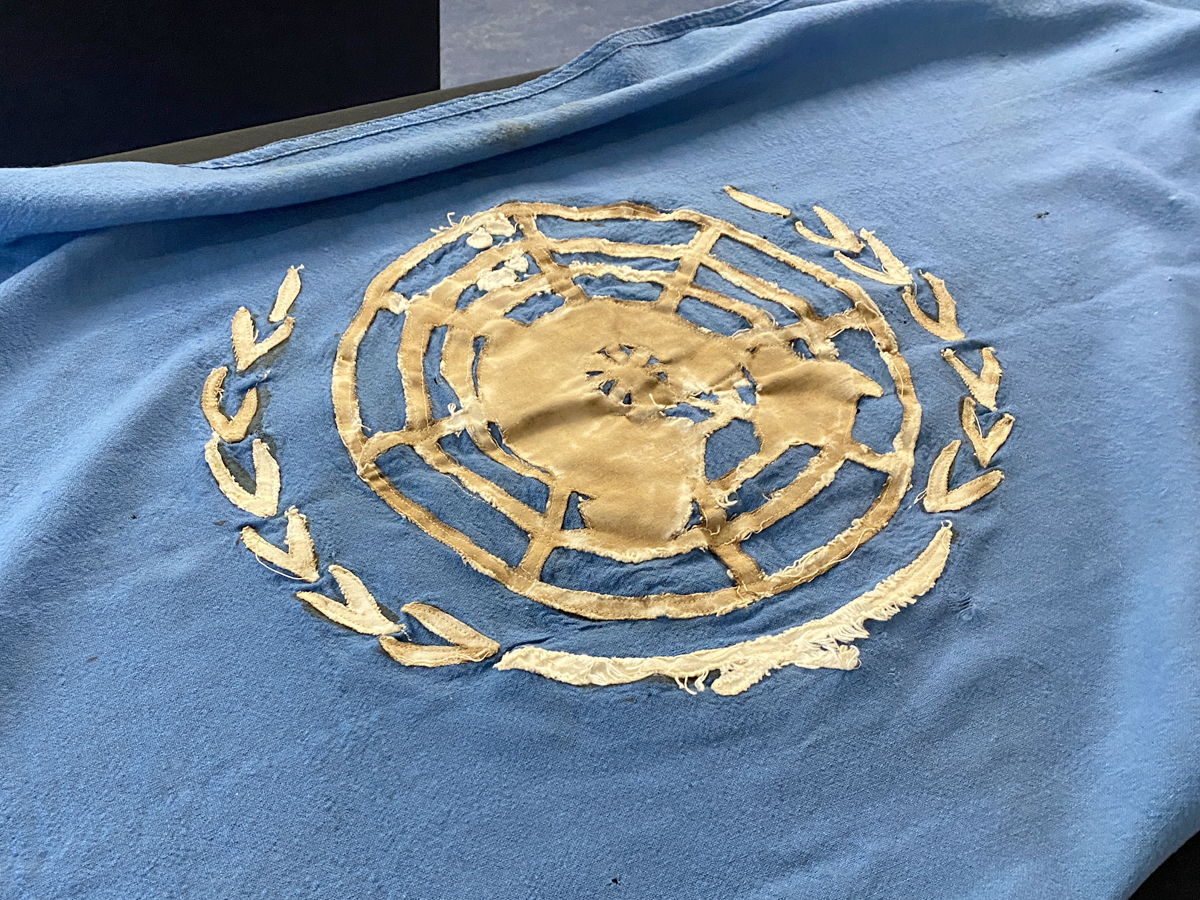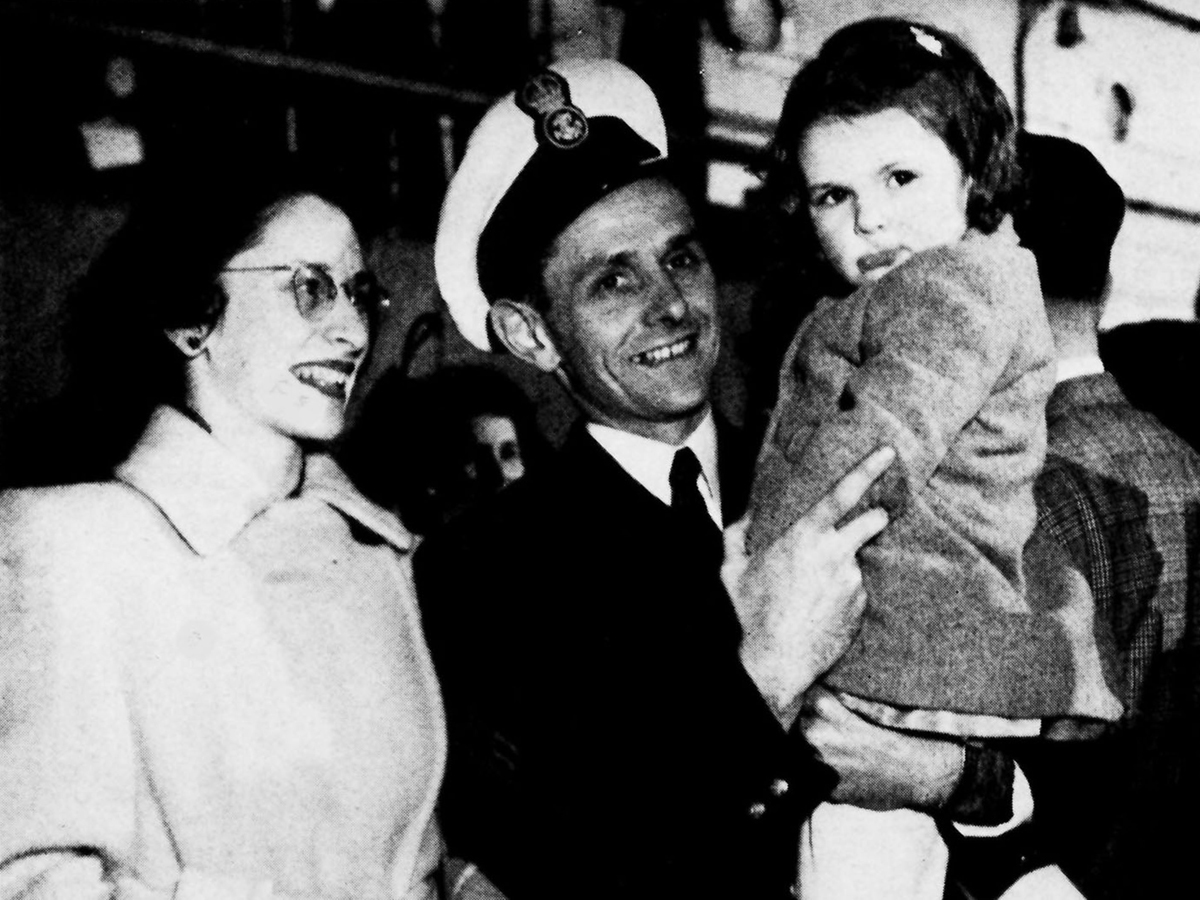CFB Esquimalt museum highlights hand-made flag for National Peacekeepers’ Day
By Lookout Production on Aug 09, 2022 with Comments 0

For National Peacekeepers’ Day, CFB Esquimalt Naval and Military Museum is highlighting a unique handmade Korean War-era United Nations flag used by HMCS Sioux. Photo by Rodney Venis, CFB Esquimalt Public Affairs.
CFB Esquimalt Public Affairs
—
In celebration of National Peacekeepers’ Day on August 9, the CFB Esquimalt Naval and Military Museum is highlighting a unique handmade Korean War-era United Nations (UN) flag.
The flag was donated by George Mannix, who handmade it in 1950 while serving as the Chief Yeoman of Signals in HMCS Sioux.
“The United Nations was so new there was no readily useable flag for a ship participating on such a mission,” said Clare Sharpe, the exhibit designer at the museum. “The improvised flag also speaks to the tremendous resilience and adaptability of the Royal Canadian Navy and its personnel in times of great uncertainty.”
The flag’s look is quite different from the modern, mass-produced flag. The white map and olive branches still show the black marker cut lines, and the flag is made of blue bunting and material cut from a regulation-issue kit bag to form the outline of the UN logo.
At the time of the flag’s construction, HMCS Sioux left its Esquimalt home base to support UN efforts to defend the Republic of Korea (ROK) from invasion by North Korea. The flag was first flown in the summer of 1950 while entering Kwajalein, an atoll in the Marshall Islands that served as a US Navy communications, supply, and refuelling station.
Sioux’s first task was to escort ships between Sasebo, Japan, and Pusan in South Korea, witnessing a veritable ‘last stand’ of ROK and UN troops against the North Koreans. Sioux then transferred to Korea’s west coast to support the Inchon landings that relieved Pusan and allowed UN forces to push north.
HMCS Sioux departed in January of 1951, served two more tours around the Korean Peninsula, and was the last Canadian vessel to depart those waters after hostilities ended.
Yeoman Mannix can be forgiven for the crude construction of this flag, given that North Korea crossed the 39th Parallel on June 25, 1950, and Sioux was en route to assist with HMC Ships Athabaskan and Cayuga on July 5.
“We are so proud to have this artifact and to be able to highlight it – and the deeper story it tells – for this year’s National Peacekeepers’ Day,” Sharpe said.
In 2008, the federal government established National Peacekeepers’ Day to recognize Canada’s greatest loss of life on a single Peacekeeping mission. The Day also provides Canadians with an opportunity to express their admiration and respect for the Canadian Armed Forces personnel, the Royal Canadian Mounted Police, and provincial and municipal police forces, as well as Canadian diplomats and civilians who have worked in support of international peace and security operations.
CFB Esquimalt will participate in local celebrations, including a parade and memorial ceremony at Esquimalt Memorial Park.
National Peacekeepers’ Day parade and ceremony
Tuesday, August 9
On August 9, a National Peacekeepers’ Day Ceremony will be held at the Esquimalt Cenotaph in Memorial Park, involving members of the Canadian Armed Forces and veterans.
There will be two short road closures in Esquimalt between 7 p.m. and 8:30 p.m. on Tuesday, August 9, to allow a parade to march to and from the Tudor House Liquor Store and Esquimalt Memorial Park for the ceremony. The closures will occur on Admirals Road between Lyall Street, Esquimalt Road, and Esquimalt Road between Admirals Road and Fraser Street.
A Royal Canadian Air Force (RCAF) CH-148 Cyclone helicopter from 443 Squadron will make a low-altitude pass over Esquimalt Memorial Park during the ceremony.

Petty Officer George Mannix, his wife, and daughter in a photo taken upon the return of HMCS Sioux from Korea in 1951. Image from Crownset Magazine, March, 1951.
Filed Under: Top Stories
About the Author:





